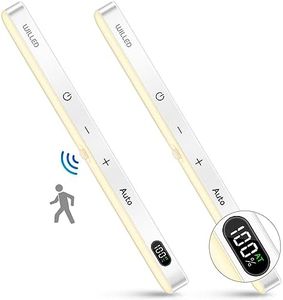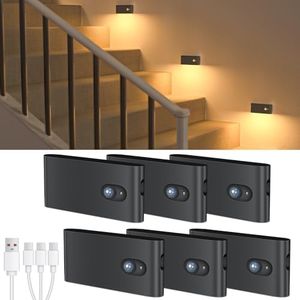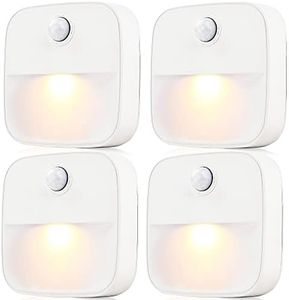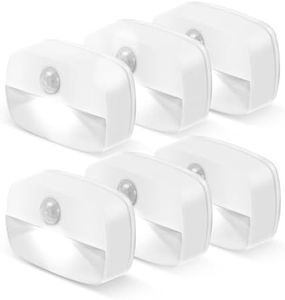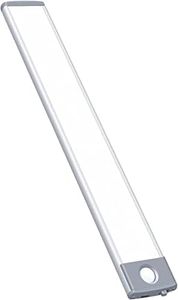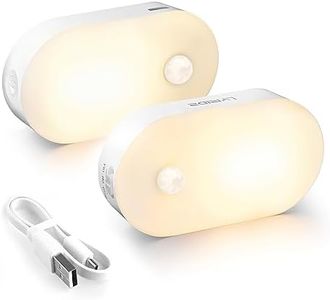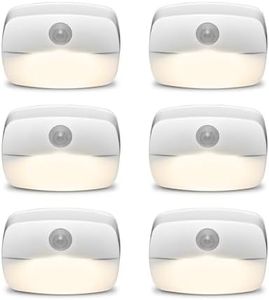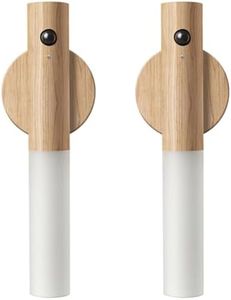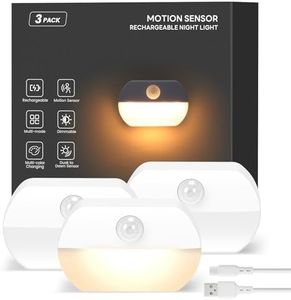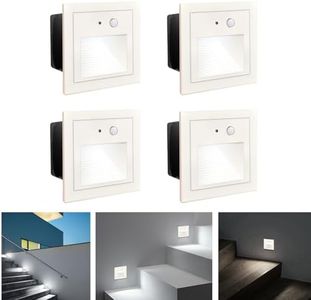We Use CookiesWe use cookies to enhance the security, performance,
functionality and for analytical and promotional activities. By continuing to browse this site you
are agreeing to our privacy policy
10 Best Motion Sensor Stair Lights
From leading brands and best sellers available on the web.Buying Guide for the Best Motion Sensor Stair Lights
Choosing the right motion sensor stair lights makes your home safer and adds convenience, especially in low-light situations or at night. When shopping for these lights, you need to think about where you'll install them, how sensitive and customizable you want the lights to be, how they get their power, what the lights look like, and whether they're easy to install and maintain. Understanding key specifications will help you find the lights that best fit your staircase and lifestyle.Sensor RangeSensor range refers to the distance at which the motion sensor can detect movement. This is important because a longer range means the lights will turn on sooner as you approach, while a shorter range may only trigger when you are very close. Sensor ranges typically span from a few feet to over 10 feet. If your staircase is wide or you want the lights to trigger earlier, look for a longer range. For tighter spaces or to avoid accidental triggers, a shorter range may work better for you.
Detection AngleThe detection angle is the width of the area the sensor can 'see' in degrees. A wide detection angle (around 120 to 180 degrees) covers more area and is good for wide or open staircases, ensuring the lights turn on no matter where you approach from. A narrower angle (60 to 90 degrees) provides more targeted activation and can help avoid false triggers in narrow or enclosed stairs. Choose based on the layout and openness of your stairs.
Light Brightness and Color TemperatureLight brightness, measured in lumens, tells you how much light the fixture emits. Too dim and the stairs stay risky; too bright and it can be harsh. For stair lighting, a range of 20 to 100 lumens per light is common—pick lower for ambiance and higher for safety. Color temperature, described in Kelvins (K), affects the 'warmth' of the light. Warm white (2700-3000K) is softer and cozier for homes, while cooler white (4000-6000K) feels brighter and more modern. Choose based on your comfort and the room’s style.
Power SourceMotion sensor stair lights can be powered by batteries, plugged into a wall outlet, or hardwired. Battery-operated models are easy to install and best for places without nearby outlets, but need regular battery changes. Plug-in lights offer constant power, making maintenance easier but require access to outlets and possibly visible cords. Hardwired options are the most permanent and tidy but usually require professional installation. Pick the option that fits your installation skills and where you plan to use the lights.
Installation TypeSome motion sensor stair lights are stick-on (using adhesive), while others screw into the wall or mount with brackets. Stick-on types are easiest to install and move, perfect for renters or those who want something temporary. Mounted fixtures are sturdier and look more integrated, but need more effort to install. Consider how permanent you want the lights to be and whether you’re comfortable with small home improvements.
Weather and Water ResistanceIf you plan to install the lights outdoors or in damp areas, check for weather or water resistance. Look for lights rated as waterproof or weatherproof (indicated by IP ratings like IP65 or IP44). For purely indoor use, this spec is less important. Choose according to where your stairs are located and seek water resistance for outdoor or basement stairs prone to moisture.
Adjustable Timer and SensitivitySome lights let you adjust how long they stay on after detecting motion and how sensitive the sensor is. Adjustable timers help save energy and ensure lights stay on just long enough. Sensitivity control helps avoid lights triggering unnecessarily due to pets or distant movement. Choose adjustable models if you want more control, especially in homes with varying needs or active pets and kids.
Light Direction and CoverageThis refers to whether the light is focused in a beam, spread out, or covers several steps at once. A more focused beam may be good for highlighting the stair tread itself, while diffused lighting softly lights up the area. Think about whether you want the whole stairway brightened or just a guiding light for the steps.

